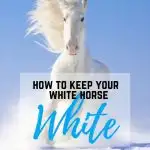It seems like a never ending issue when you have a horse with a white tail, you get the tail white and they get it yellow or green again. The cycle repeats. Getting your horses tail white can take multiple attempts and there are a variety of different things you can do to help. Keeping your horse’s tail white is a whole other issue entirely!
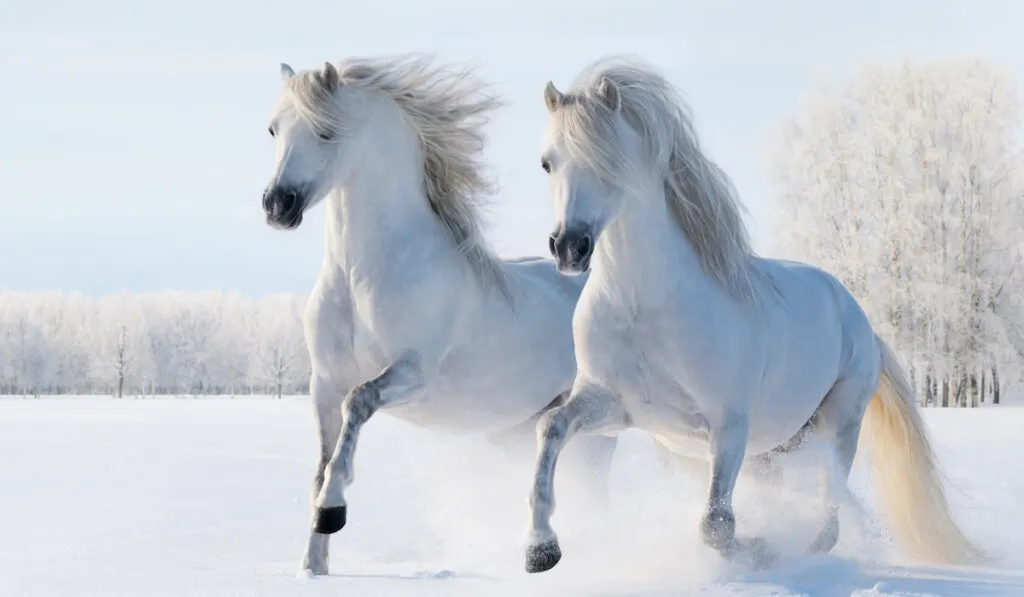
The issue seems to be even worse with mares who don’t bother to lift their tail up all the way when they pee. Yeah, that yellow stain on your white mare’s tail is probably pee stain. But geldings aren’t excluded from the issue either.
My mare is a palomino and I, too, feel the burden of trying to keep a white tail well..white. It isn’t easy and I have my own tried and true method (Orvus Soap and Bluing when Needed), but I wanted to see what other’s on the web had tried that worked for them as well.
I realize that not all stains are the same. So let’s have a look at the results.
Table of Contents
My Favorite Way to Whiten a Horse’s Tail
I don’t want you to think this article is click bait so I wanted to make sure to give you my answer right up front. I, personally, like Orvus WA Paste for general baths but it also happens to do a great job keeping tails white.
Orvus is my go to for horses that need a deep clean or for manes and tails that need to be extra clean. On horses with particularly yellow stains, I’ll mix 5 – 10 drops of bluing (like this one )into a handful of Orvus and apply it and let it sit for 3 minutes or so before I wash it all the way out.
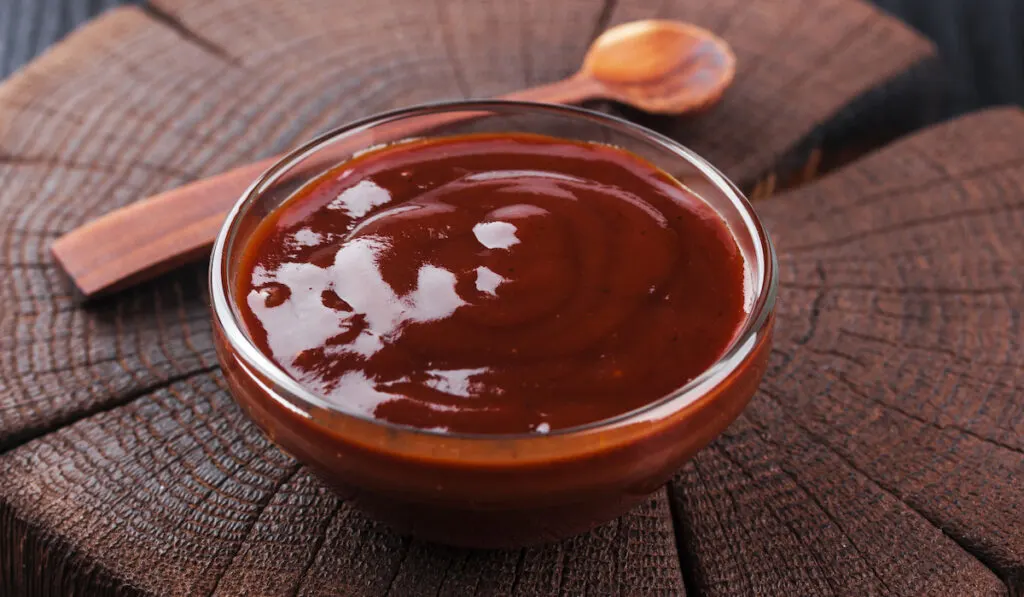
Other Recommended Ways to Whiten Manes and Tails
Ketchup
Yup, that’s right, some equestrians swear by washing your horses white mane or tail in ketchup.
How to Use Ketchup to Whiten Horse Tails
- Wash the tail as usual with your favorite soap.
- Rub ketchup into your horses tail and allow to sit for at least 15 minutes.
- Rinse thoroughly.
Baking Soda
Now here is a tail whitening solution I have seen a number of different places including top show barns. According to Andalusian Horse World, the sodium bicarbonate acts as a strong base (alkaline) to bind to the stains and then the Vinegar, a gentle acid, rinses everything out.
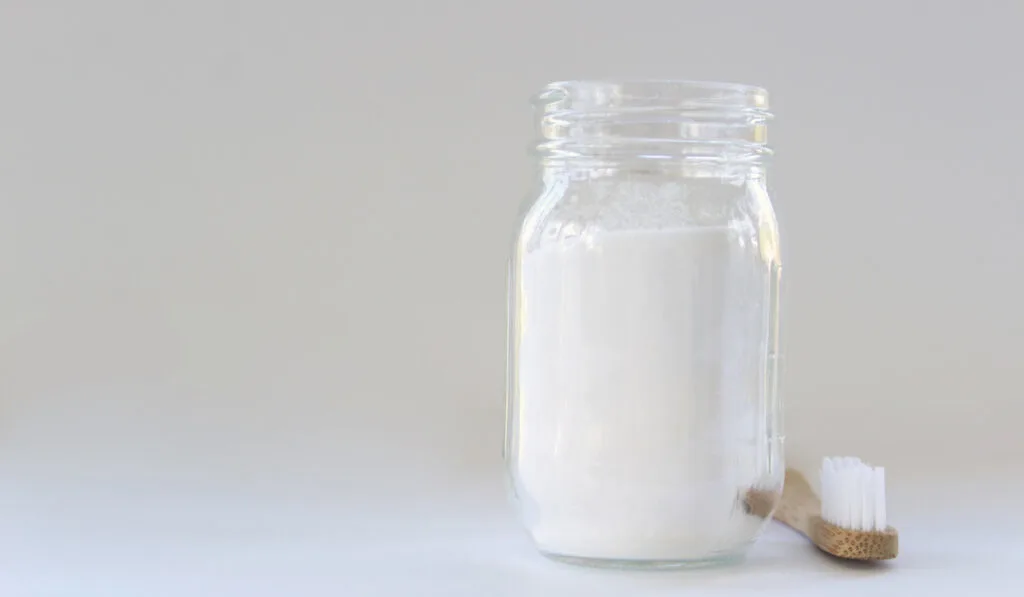
How To Use Baking Soda to Whiten Horse Tails
- Combine water, baking soda and shampoo (I recommend Orvus but any shampoo will work) and make a paste.
- Thoroughly work into tail hairs, concentrating especially on areas that are the most stained.
- Leave on the tail for 15 to 20 minutes
- Rinse thoroughly with vinegar.
- Follow with your homemade bluing shampoo for extra whitening if needed.
OxiClean
When people suggest cleansers like OxiClean you have to be really careful about whether you allow the detergent to touch your horses skin.
Most horses won’t have a reaction for the short time the product is on their skin but, some horses may be sensitive.
Always test by applying a small amount and then letting it set for 24 hours. Alternatively, apply only to the skirt of the tail below the tail bone.
How to Use OxiClean to Whiten a Horse’s Tail
- Mix A small amount of OxiClean with your horses normal shampoo.
- Massage thoroughly into tail.
- Let set five to ten minutes
- Rinse thoroughly.
Alternately, some have suggested using the OxyClean spray instead of an oxyclean / shampoo mixture and then following the directions as listed above.
Goop Automotive Cleaner
- Versatile Cleaner: Designed to quickly clean and safely remove grease, paint, ink, tar, industrial soils from your hands, tools, and it can also remove stains from your clothes
- Waterless Hand Cleaner: This mechanic hand cleaner comes in cream form for delicate and thorough cleaning without needing to rinse with water so it can be used anywhere and anytime
Several tail whitening threads in horse forums advocate the use of Goop cleanser for whitening tails (and any other white areas). The trick here seems to be by using the original Goop . Not Orange goop or any other kind of off brand your store may have.
Instructions for Using Goop Automotive Cleaner to Whiten Tails
- Apply straight to DRY hair.
- Let sit for five to 10 minutes minimum
- Add Shampoo and let it sit another 5 – 10 minutes
- Rinse
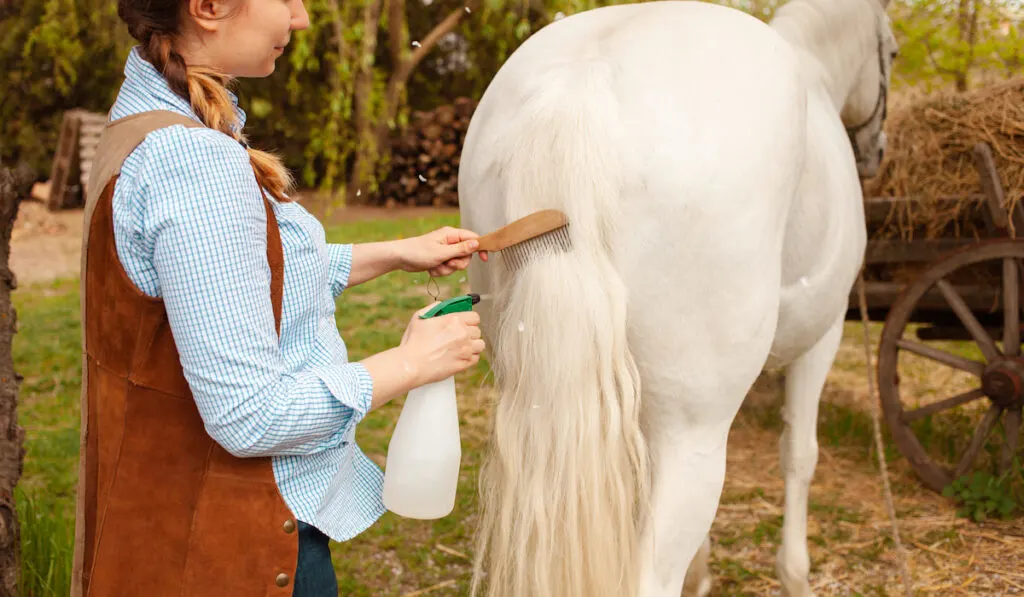
Dish Soap and Laundry Detergent for Whitening Horse Tails
Blue Dish soap and blue laundry detergents, such as original Tide, are also highly recommended in several forums for whitening manes and tails.
In each case, with these products, the recommendation is to work the product into the hair and leave sit for at least 10 minutes before rinsing.
Word of Caution
Anytime you are going to be using a new product that touches his skin, you will want to test it to be sure your horse isn’t allergic to the product. One way to do this is to apply a small amount to your horse and then wait 24 hours and check for a reaction.
Another thing you want to be sure of is that you aren’t doing anything to your horses hair that you wouldn’t reasonably do to your own hair. Of course, I don’t expect that you would use ketchup on your own hair but it isn’t an ingredient that would necessarily have you worried to use.
Some tail whitening recipes online advocate using much stronger products like hydrogen peroxide and bleach. I, for one, know that I would never put either on my hair.
Some recipes even advocate combining bleach and dish soap, a combination that can result in a toxic gas. In my opinion, while I love a nice white tail on my mare, it isn’t worth using something like this and either harming her, burning her skin, causing her tail to fall out or worse.
I appreciate that others have recipes they swear by with these harsh ingredients, but I personally wouldn’t use them on my own animal.
How to Tell if Your Whitening Regime Worked
The best way to tell if your tail whitening efforts show good results is to take a before picture and an after picture.
Make sure the tail is brushed out and dry for both pictures. A wet, white tail almost always has a yellow tinge to it. You can’t tell true results until the tail has completely dried. Don’t let a yellow tinge discourage you, wait till the tail dries and snap your after picture.
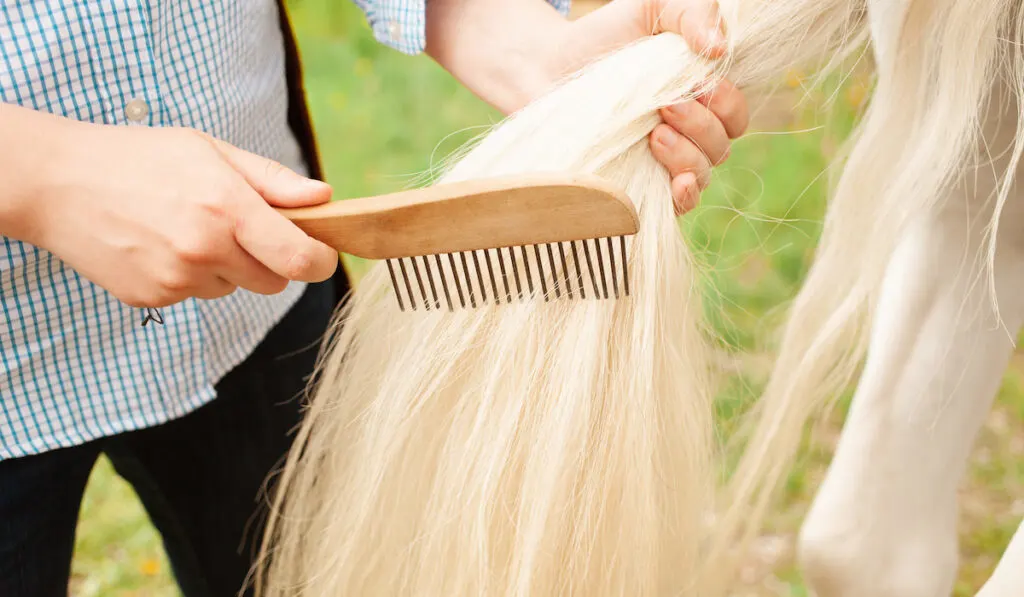
Whitening Other Parts of the Horse’s Body
All of the recipes above can be used on the mane and body as well. You will want to be very careful around the eyes, however, because they can be very sensitive.
When applying any whitening shampoo / agent to the horses body, it is usually best not to let it dry on the horse which means you may have to bathe the horse in the shade or adjust the time you let the product sit.
Conditioning The Tail
When you whiten the tail, you want to be sure to condition it afterwards to prevent breakage. I typically use my favorite human conditioner for this but there are several horse specific conditioners on the market that do a great job as well.
I like to apply conditioner after the final rinse and then let it set about 5 minutes and rinse all of the conditioner out. Then, after the tail dries, I use my DIY conditioning spray to help me derange any knots that are in the tail from the washing process.
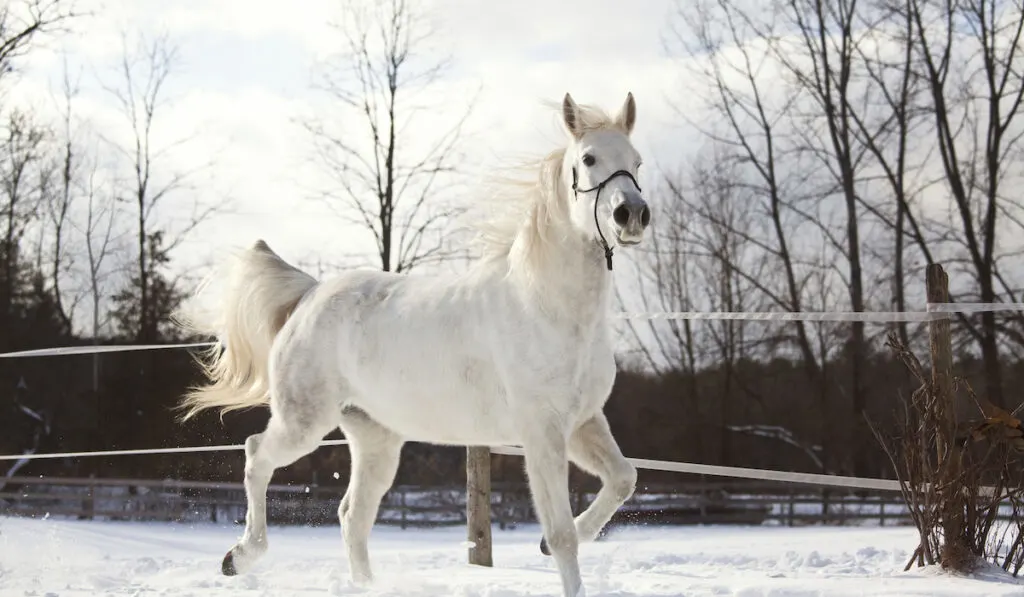
Keeping the Horse’s Tail White
After spending what seems like half a day washing your horse’s tail and getting it as white as possible, how are you going to keep it that way?
My two favorite ways are to bag the tail or to put it up with vet wrap. Tail bags are awesome, they come in so many great colors and patterns. My favorite are the tail bags by Lyon & Smith , they come in so many great colors. Plus, they are simple to put on.
You braid your horse’s tail, pop it in the tail bag and you are good to go. In most cases this will also help mares that pee on their tails as the hair is no longer able to dangle right in the path.
If you find that your mare STILL manages to pee on her tail even when it is in a tail bag, then a cloth tail bag may not be the right answer for you.
You see, the tail bag is absorbent. If your mare happens to pee on her bag, it’s going to soak right in and be held right next to the tail. similarly, if your gelding likes to lay in his pee spot or manure, you could have a similar situation.
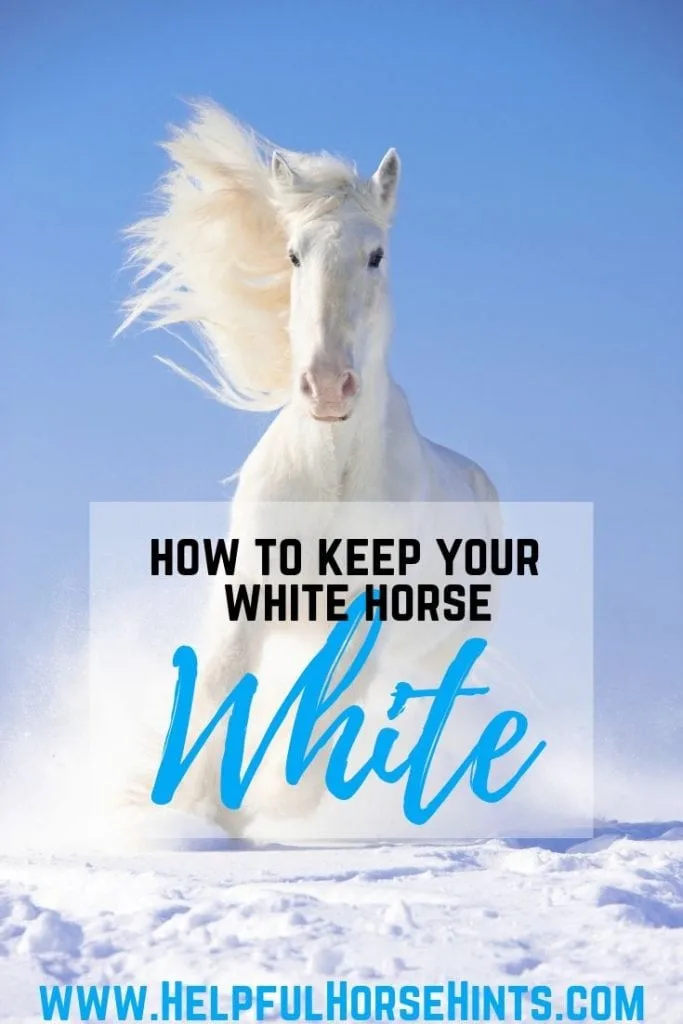
I have yet to find a tail bag that is both waterproof on the underside and breathable. For most horses the cotton ones are fine.
Another option is to braid the horse’s tail and then wrap it with vetrap. Vetrap isn’t waterproof but it is water resistant. Of course, you will want to use white vetrap just to be extra sure none of the color transfers to your horses tail.
The disadvantage to both tail bags and vet wrap is that your horse looses some of their ability to swat flies. If you are going to put a tail up during fly season, be sure you use fly spray on your horse to help keep those annoying pests at bay!
Final Thoughts
There are many different tail whitening recipes that equestrians swear by to help keep horse tails white. I’ve scoured the web and listed the most common tail whitening shampoo recipes here in this post. Hopefully these will give you a jump start to help keep your horses tail white.
Related Posts
- 5 of the Best Horse Grooming Aprons
- 10 Essential Grooming Supplies for Every Horse Owner
- Cleaning & Disinfecting Horse Brushes – Step-By-Step Guide
Source:
- https://andalusianworld.com/site/55581-2/

